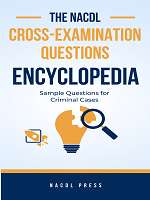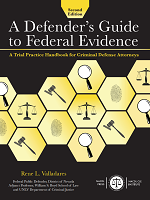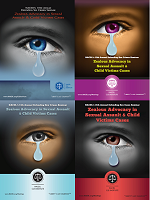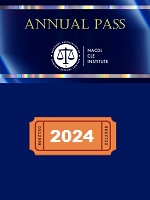Government Agrees to Notify Defendants of Error, Waive Procedural Arguments and Offer Free DNA Testing
(Washington, DC – July 18, 2013) Today the Innocence Project, the National Association for Criminal Defense Lawyers (NACDL) and its partners announced a groundbreaking and historic agreement with the FBI and the Department of Justice (DOJ) to review more than 2,000 criminal cases in which the FBI conducted microscopic hair analysis of crime scene evidence. The agencies agreed to undertake the review after three men who had served lengthy prison sentences were exonerated by DNA testing in cases in which three different FBI hair examiners provided testimony which exceeded the limits of science and contributed to their wrongful convictions. The review will focus on specific cases in which FBI Laboratory reports and testimony included statements that were scientifically invalid.
The Innocence Project and NACDL have collaborated on this important matter with its pro bono partners, David Koropp, a partner at Winston & Strawn LLP and his colleagues; along with Michael R. Bromwich, Managing Principal of The Bromwich Group and Partner at Goodwin Procter LLP, who served as the Inspector General of DOJ from 1994-1999. The Innocence Project, NACDL and its partners have worked closely for over a year with the FBI and DOJ in determining the scope, protocols and implementation of the review that will cover more than 2,000 cases that were processed by the FBI between 1985 and 2000, as well as an unknown number of cases that were processed in preceding years. The review covers cases in both the federal and state court systems.
Because of the importance attached to these cases, the DOJ has agreed, for the first time in its history, not to raise procedural objections, such as statute of limitations and procedural default claims, in response to the petitions of criminal defendants seeking to have their convictions overturned because of faulty FBI microscopic hair comparison laboratory reports and/or testimony. This agreement will help ensure that defendants will not have any wrongful conviction claims dismissed before being reviewed by a court on the merits. The government also agrees to directly notify the defendants and their lawyers in cases where an error is identified and to offer free DNA testing in the cases where an error was identified in the analysis or testimony and there is either a court order or a request for testing by the prosecution.
“The government’s willingness to admit error and accept its duty to correct those errors in an extraordinarily large number of cases is truly unprecedented. It signals a new era in this country that values science and recognizes that truth and justice should triumph over procedural obstacles,” said Peter Neufeld, Co-Director of the Innocence Project, which is affiliated with Cardozo School of Law. “Unfortunately hair analysis is only one of many flawed forensic practices that are still used that pose the threat of infecting criminal trials across the nation. We need leadership in Washington to ensure scientific rigor and greater oversight over forensics to prevent these miscarriages of justice.”
“We hope that the actions taken by the FBI and DOJ will serve as a model for state law enforcement and crime laboratories throughout the country to respect ethical obligations to reverse wrongful convictions when learning about improper evidence,” said Norman Reimer, Executive Director of NACDL.
Before DNA testing was used in criminal trials, prosecutors throughout the country routinely relied on microscopic hair comparison analysis, often provided by the FBI, to link a criminal defendant to a crime. The practice was deemed “highly unreliable” in the 2009 National Academy of Science report on forensic science, Strengthening Forensic Science in the United States: A Path Forward. As part of the agreement announced today, the agencies acknowledge that there are significant limitations on the probative value of hair analysis because “the size of the pool of people who could be included as a possible source of a specific hair is unknown.” The agencies further have agreed that “an examiner report or testimony that applies probabilities to a particular inclusion of someone as a source of a hair of unknown origin cannot be scientifically supported.”
“It is possible to conduct hair microscopy and find similarities among various samples. But it appears that in many cases the FBI analysts were overstating the significance of these similarities, often leaving juries with the false impression that a hair recovered from the crime scene must have come from the defendant and could not have come from anyone else,” said Neufeld. “The government is now acknowledging that this was wrong and that the science does not support such conclusions.”
The FBI was motivated to conduct the review after three men, Donald Gates, Santae Tribble and Kirk Odom, were exonerated by DNA evidence in three separate cases where different FBI analysts had provided scientifically invalid testimony. The exonerations were secured by the Public Defender Service for the District of Columbia. In each of these cases, the FBI analysts’ testimony over stated the probative value of the evidence. The three men each served more than 20 years before they were exonerated. More broadly, the Innocence Project has already identified that 72 of the first 310 wrongful convictions overturned by DNA evidence involved faulty hair evidence. Over the course of 25 years, the FBI conducted a two-week training course that reached several hundred state and local hair examiners throughout the country and that incorporated some of the same scientifically flawed language that the FBI’s examiners had used in lab reports and trial testimony. As a result, it is likely that audits similar to the FBI’s will be necessary in most states.
Under the agreement, the FBI will review every case between 1985 – 2000 where the FBI conducted hair analysis and found a positive association between the hair evidence submitted for analysis and a known sample. So far the review has already uncovered more than 2000 cases that fit these criteria. For cases pre-dating 1985, the FBI will make best efforts to identify cases where such positive associations were found. For all the cases it identifies, the FBI will notify the law enforcement agency that initially requested the testing and make efforts to locate the trial transcript or any relevant information about the hair analysis, including in cases that resulted in a plea. The FBI will then review the information to determine if the lab report or trial testimony was scientifically invalid. The FBI will share its results with the Innocence Project and NACDL, which, with the assistance of Winston & Strawn LLP, will conduct its own independent reviews and share its findings with the FBI. In this process, capital cases, especially those where the defendant’s execution date has been set, will be assigned the highest priority. The review will include cases where the defendant has already been executed.
"This review is something that prosecutors and defense lawyers alike should celebrate -- an unprecedented and massive effort by the FBI designed to identify historical cases in which flawed forensic evidence involving microscopic hair examination might have led to wrongful convictions,” added Bromwich. “This review is an important landmark in bringing together the law enforcement and defense communities in pursuit of the shared objective of ensuring that only the guilty are convicted and that only scientifically valid forensic science is used in our criminal justice system."
The FBI and DOJ will notify the defendant, defense lawyer and prosecutor in each case where it is determined that there was error in the hair analysis evidence. In addition, the FBI agrees to perform DNA testing of the relevant hair evidence in cases where it is ordered by the court or requested by the prosecution.
NACDL President Steven D. Benjamin said: “We are especially pleased that where the flawed evidence was admitted in federal cases the government has agreed to waive the onerous procedural bars that prosecutors often use to bar reconsideration. This will be critical to giving wrongly convicted people a fair chance at a fair review. We call upon the states to follow that lead. Justice demands no less.”
The Innocence Project, NACDL and Winston & Strawn LLP will work together to ensure that all criminal defendants who were convicted by faulty hair comparison analysis evidence receive representation to pursue relief.
“This review is an example of our judicial system at its best -- prosecutors and defense lawyers working together to see that justice is done,” said Koropp. “Determining whether erroneous forensic evidence may have been used in criminal cases is vital to maintaining the integrity of our criminal justice system. The FBI is to be commended for the leadership position it has taken to help ensure that only scientifically valid evidence is used to identify and convict criminal defendants.”
Contacts
Paul Cates, pcates@innocenceproject.org, 212-364-5346
Ivan Dominguez, idominguez@nacdl.org, 202-465-7662
Melissa Schwartz, melissa.schwartz@bromwichgroup.com, 202-682-4267
The National Association of Criminal Defense Lawyers is the preeminent organization advancing the mission of the criminal defense bar to ensure justice and due process for persons accused of crime or wrongdoing. A professional bar association founded in 1958, NACDL's many thousands of direct members in 28 countries – and 90 state, provincial and local affiliate organizations totaling up to 40,000 attorneys – include private criminal defense lawyers, public defenders, military defense counsel, law professors and judges committed to preserving fairness and promoting a rational and humane criminal legal system.







